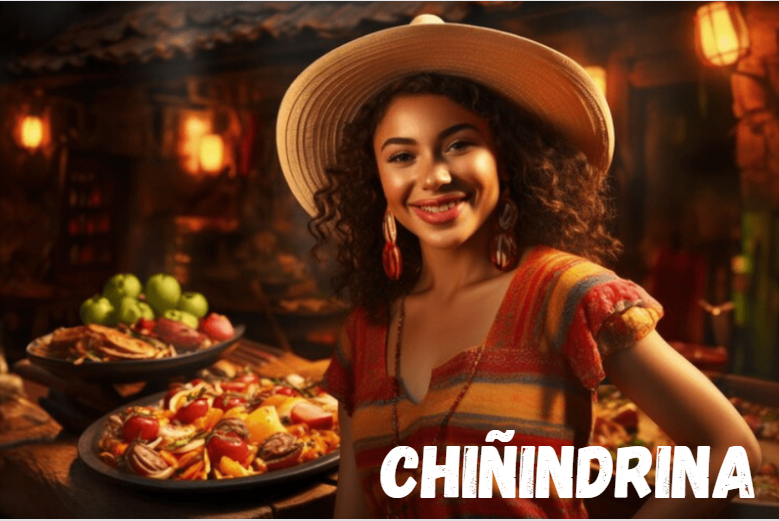Contents
Introduction
Chiñindrina is a traditional Mexican street food delicacy known for its unique blend of flavors and textures. This dish, cherished in various regions of Mexico, offers a delightful culinary experience that captivates locals and tourists alike. In this article, we will delve into the origins, preparation methods, variations, cultural significance, and nutritional aspects of chiñindrina, providing a comprehensive understanding of this beloved street food.
The Origins of Chiñindrina
Historical Background
Chiñindrina’s roots trace back to the rich culinary traditions of Mexico, where street food has always played a crucial role in daily life. While the exact origins of chiñindrina are not well-documented, it is believed to have emerged in central Mexico, particularly in states like Jalisco and Michoacán, where street vendors are known for their innovative and flavorful creations.
Cultural Significance
Chiñindrina is more than just a snack; it is a cultural symbol that reflects the vibrant street food culture of Mexico. It represents the ingenuity of street vendors who create delicious, affordable, and accessible meals for people from all walks of life. The dish is often associated with local fairs, festivals, and markets, where it is enjoyed by both locals and visitors.
Ingredients and Preparation
Essential Ingredients
The beauty of chiñindrina lies in its simplicity and the use of fresh, locally-sourced ingredients. The essential components include:
- Tostada Shells: Crispy, fried corn tortillas that serve as the base of the dish.
- Pork Rinds (Chicharrón): Deep-fried pork skin that adds a crunchy texture.
- Shredded Cabbage: Fresh cabbage finely shredded to provide a crisp and refreshing contrast.
- Tomatoes: Ripe tomatoes diced to add juiciness and acidity.
- Avocado: Sliced or mashed avocado for a creamy element.
- Lime Juice: Freshly squeezed lime juice to enhance the flavors.
- Hot Sauce: A variety of hot sauces can be used to add spice and heat.
- Salt and Pepper: Basic seasonings to taste.
Preparation Methods
- Preparing the Tostada Shells: The corn tortillas are fried until they are golden brown and crispy. This step is crucial for achieving the right texture.
- Assembling the Chiñindrina: The fried tostada shells are topped with a layer of shredded cabbage, followed by diced tomatoes, avocado slices, and pork rinds.
- Seasoning and Serving: The dish is then seasoned with salt, pepper, and a generous squeeze of lime juice. Hot sauce is drizzled on top according to personal preference.
Variations of Chiñindrina
Regional Variations
Different regions in Mexico have their unique take on chiñindrina, incorporating local ingredients and flavors. Some popular variations include:
- Jalisco Style: Often includes a layer of refried beans spread on the tostada shell before adding other ingredients.
- Michoacán Style: May feature additional toppings like pickled jalapeños, radishes, and a special salsa unique to the region.
Modern Twists
Modern chefs and street vendors are constantly experimenting with chiñindrina, adding gourmet ingredients and innovative twists. Some contemporary versions include:
- Seafood Chiñindrina: Incorporating shrimp or fish for a coastal flavor.
- Vegetarian Chiñindrina: Using tofu or grilled vegetables instead of pork rinds.
- Fusion Chiñindrina: Combining elements from other cuisines, such as adding a touch of Korean kimchi or Japanese wasabi.
Nutritional Aspects
Nutritional Benefits
While chiñindrina is often considered a snack or street food, it can also offer nutritional benefits when prepared with fresh and healthy ingredients. Some benefits include:
- High Fiber Content: The cabbage and tomatoes provide dietary fiber, aiding digestion.
- Healthy Fats: Avocado offers healthy monounsaturated fats that are good for heart health.
- Protein: Pork rinds, although high in fat, also provide a source of protein.
Health Considerations
Despite its delicious taste, it is important to consume chiñindrina in moderation due to:
- High Calorie Count: The fried tostada shells and pork rinds can be high in calories.
- Sodium Levels: Depending on the amount of salt and hot sauce used, chiñindrina can be high in sodium.
Chiñindrina in Popular Culture
Street Food Culture
Chiñindrina holds a special place in the heart of Mexican street food culture. Street vendors, known as “antojitos” vendors, pride themselves on preparing this dish with great care and tradition. It is commonly enjoyed during local fairs, outdoor markets, and family gatherings.
Media and Recognition
The popularity of chiñindrina has grown beyond Mexico’s borders, with food bloggers, travel shows, and culinary magazines highlighting its unique flavors. It has been featured in various media outlets, bringing international attention to this delightful street food.
How to Make Chiñindrina at Home
Step-by-Step Recipe
For those looking to recreate chiñindrina at home, here is a simple step-by-step recipe:
Ingredients:
- 4 corn tortillas
- 1 cup pork rinds (chicharrón)
- 1 cup shredded cabbage
- 2 tomatoes, diced
- 1 avocado, sliced
- 2 limes, juiced
- Hot sauce, to taste
- Salt and pepper, to taste
- Oil for frying
Instructions:
- Heat oil in a frying pan over medium heat.
- Fry the corn tortillas until golden brown and crispy. Remove and drain on paper towels.
- Arrange the fried tortillas on a serving plate.
- Top each tortilla with shredded cabbage, diced tomatoes, avocado slices, and pork rinds.
- Season with salt, pepper, and lime juice.
- Drizzle hot sauce over the top.
- Serve immediately and enjoy your homemade chiñindrina.
Tips for the Best Chiñindrina
- Use Fresh Ingredients: Fresh cabbage, ripe tomatoes, and perfectly ripe avocados make a big difference.
- Customize the Spice Level: Adjust the amount of hot sauce to suit your taste.
- Serve Immediately: Chiñindrina is best enjoyed fresh to maintain the crispy texture of the tostada shells and pork rinds.
FAQs About Chiñindrina
What is Chiñindrina?
Chiñindrina is a traditional Mexican street food delicacy made with crispy tostada shells, pork rinds, shredded cabbage, tomatoes, avocado, lime juice, and hot sauce.
Where Can I Find Chiñindrina?
Chiñindrina can be found at street food stalls, local markets, and fairs throughout Mexico. Some Mexican restaurants outside of Mexico may also offer this dish.
Is Chiñindrina Healthy?
Chiñindrina can be a nutritious snack when prepared with fresh ingredients, but it should be consumed in moderation due to its high calorie and sodium content.
Can I Make a Vegetarian Version of Chiñindrina?
Yes, you can substitute the pork rinds with tofu, grilled vegetables, or other vegetarian-friendly toppings.
What is the Best Way to Serve Chiñindrina?
Chiñindrina is best served fresh and enjoyed immediately to maintain its crispy texture and vibrant flavors.
Conclusion
Chiñindrina is a true testament to the rich and diverse culinary traditions of Mexico. Its unique combination of flavors and textures makes it a beloved street food that continues to captivate people both in Mexico and around the world.
By understanding its origins, variations, and nutritional aspects, we can appreciate this delightful dish even more. Whether you enjoy it at a bustling street market or recreate it in your own kitchen, chiñindrina is sure to provide a memorable culinary experience.




